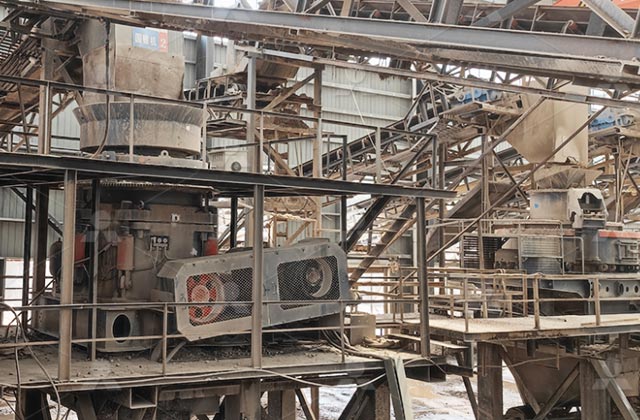Copper ore mining and beneficiation are integral processes in the extraction of copper, a valuable metal used in various industries worldwide. From its initial extraction to the final production of usable copper products, these processes involve several stages, including mining, crushing, grinding, and beneficiation. In this article, we’ll explore the crusher’s role in copper ore mining and beneficiation, highlighting its significance and the technologies involved.
Mining Copper Ore:
Copper ore is typically found in deposits within the Earth’s crust. These deposits can vary in size, grade, and composition, requiring different extraction techniques. The primary methods of copper ore extraction include open-pit mining, underground mining, and in-situ leaching.

In open-pit mining, large quantities of ore are excavated from the surface using heavy machinery such as excavators, trucks, and drills. Underground mining involves accessing ore deposits through tunnels and shafts, often in deeper, more concentrated deposits. In-situ leaching involves injecting leach solutions into ore bodies to dissolve the copper, which is then pumped to the surface for processing.
Crushing and Grinding:
Once the ore is extracted from the ground, it is typically transported to a processing facility for further treatment. Crushing and grinding are essential steps in preparing the ore for beneficiation. Crushers are used to reduce the size of the ore particles to a level where grinding can be carried out efficiently.
Crushers in Copper Ore Processing:
- Jaw Crushers: These are commonly used primary crushers in copper mining operations. They crush the ore by applying pressure between two surfaces, typically one fixed and one movable. Jaw crushers are capable of handling large chunks of ore efficiently.
- Gyratory Crushers: Similar to jaw crushers, gyratory crushers also operate by compression, but they have a conical head and a concave surface. They are often used in primary crushing stages and can handle larger feed sizes than jaw crushers.
- Cone Crushers: Cone crushers are utilized for secondary and tertiary crushing stages. They operate by compressing the ore between a mantle and a concave, providing a finer product size compared to jaw and gyratory crushers.
- Impact Crushers: Impact crushers use the principle of rapid impact to crush the ore. They are suitable for both primary and secondary crushing stages and are often used in conjunction with other types of crushers in a processing plant.
Beneficiation of Copper Ore:
After crushing and grinding, the copper ore undergoes beneficiation to increase its concentration and purity. Beneficiation processes vary depending on the ore’s composition but commonly involve froth flotation, gravity separation, and magnetic separation.
Froth Flotation:
Froth flotation is the most widely used method for beneficiation of copper ore. In this process, the finely ground ore is mixed with water and chemicals, including frothers and collectors. Air is then bubbled through the mixture, causing hydrophobic copper minerals to attach to bubbles, which rise to the surface and form a froth layer. This froth is skimmed off, and the concentrated copper minerals are collected.
Gravity and Magnetic Separation:
Gravity separation techniques exploit the differences in density between ore minerals and gangue minerals. Magnetic separation relies on the magnetic properties of minerals to separate them from non-magnetic materials. These methods are often used in combination with froth flotation to further concentrate the copper ore.
Crushers play a crucial role in the mining and beneficiation of copper ore by reducing the ore size to facilitate efficient grinding and subsequent beneficiation processes. Various types of crushers are employed depending on the ore characteristics and processing requirements. Additionally, beneficiation processes such as froth flotation, gravity separation, and magnetic separation further refine the copper concentrate for eventual use in various industries, including electronics, construction, and transportation. Efficient and sustainable extraction and processing techniques are essential to meet the growing demand for copper while minimizing environmental impacts.
